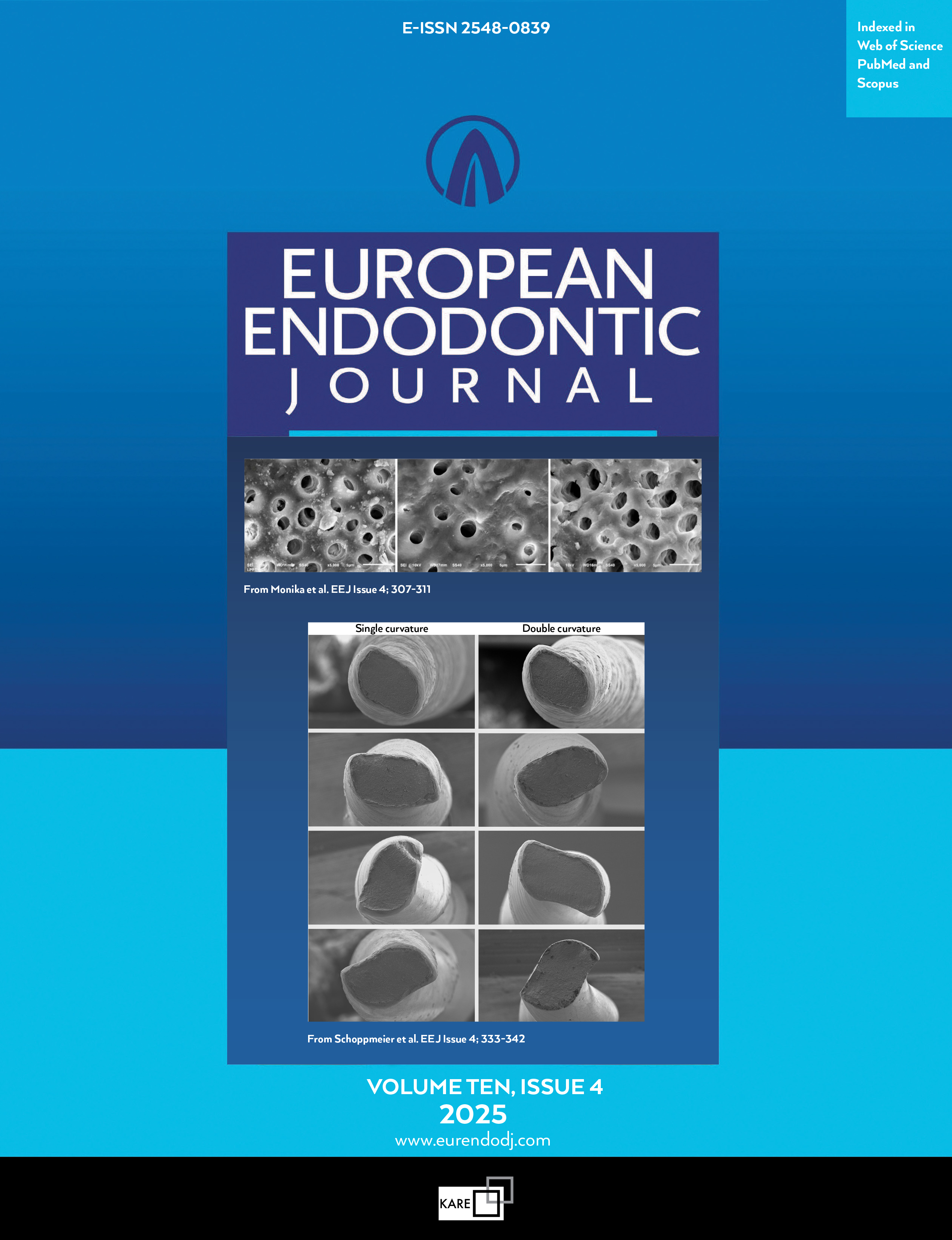Metrics
2024 IMPACT FACTOR
5 year Impact Factor
Eigenfactor Score
2024 CiteScore
Journal Citation Reports
(Clarivate 2025, JIF Rank)
Evaluation of the Cleanliness and Sealer Penetration of the Root Canal System Following Final Irrigation Using Chelating Agents
Asteria Monika1, Helga Anindyastika Maranantan1, Yogi Premadhika1, Diatri Nari Ratih2, Andina Widyastuti2, Wignyo Hadriyanto2, Ema Mulyawati21Conservative Dentistry Specialist Study Programme, Universitas Gadjah Mada, Faculty of Dentistry, Yogyakarta, Indonesia2Department of Conservative Dentistry, Universitas Gadjah Mada, Faculty of Dentistry, Yogyakarta, Indonesia
Objectives: In root canal treatment, final root canal irrigation plays an essential role in removing smear layers, especially inorganic components, in order to achieve hermetic obturation of the root canal system. This study aimed to evaluate the root canal cleanliness, sealer penetration, and apical sealing ability of the root canal system following final irrigation using chelating agents, namely nano-chitosan, which was compared to EDTA and novel silver citrate (NSC).
Methods: This study used 135 premolars, which were divided into three evaluations: root canal cleanliness, sealer penetration, and apical sealing ability. Teeth were assigned into three groups. Group 1: EDTA, group 2: NSC, and group 3: nano-chitosan. Scanning Electron Microscope (SEM) was used to evaluate root canal cleanliness and apical sealing ability. A stereo microscope was utilized to evaluate sealer penetration. The root canal cleanliness data were analysed using the Chi-Square test, whereas sealer penetration and apical sealing ability data were analysed with a two-way ANOVA and LSD Post-Hoc test with a significance level of 95%.
Results: In the root canal cleanliness evaluation, all three final irrigation solutions showed similar cleanliness of the root canals (p>0.05). In the evaluation of sealer penetration and apical sealing ability, nano-chitosan produced the highest sealer penetration and apical sealing ability compared to EDTA and NSC (p<0.05).
Conclusion: All final irrigations produced the same root canal cleanliness; however, nano-chitosan final irrigation solution generated the longest sealer penetration and the greatest apical sealing ability than EDTA and NSC. (EEJ-2024-12-188)
Manuscript Language: English
(244 downloaded)


